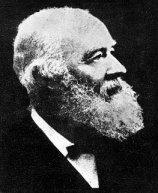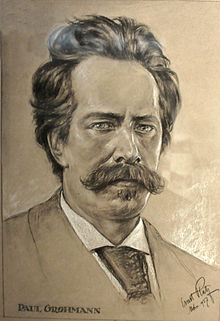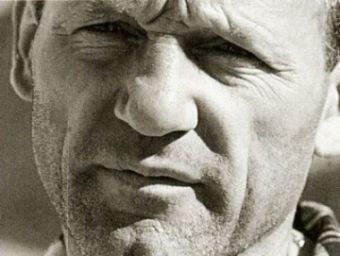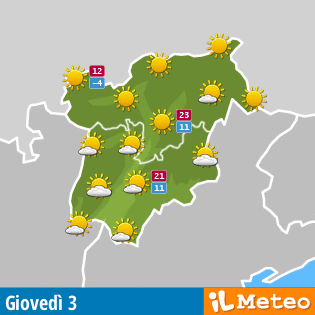Alpine Guides
The exporers of Dolomites Mountains
 |
| Italian |

Alpine Guide is the profession which is nationally and internationally recognized as the only role that can safeguard a correct attendance of the mountain environment.
The role of Alpine Guides is playing along with visitors and conveying the multiple aspects of the mountain. Their professionalism is very advanced, so to require a long and complex training process in order to guarantee these professionals strong skills on whatever ground (ice, rock, scree, snow).
The early Alpine Guides were bestowed such title by the pioneers of the Dolomites peaks in the 1800s. Those explorers were scientists, artists, scholars, who came from England and then from Germany and Austria.
For local people instead the peaks were not interesting. The only attendee of peaks were hunters, especially chamois hunters, just the animal living through the rocks.
Those hunters led themselves to very high and impassable places for chasing that ungulates that are formidable rock climbers. Their mountaineering skills were strong, although they were not interested in the peaks but only in the paths of chamois. Maybe they climbed the top of the mountains sometimes, but that was never known.
When the explorers came with the aim to get before on the tops of Dolomites, they recruited local hunters as they were aware of their skills and expertise of the area.
 John Ball and Paul Grohmann on right (pictures from Wikipedia) |
 |
The very first alpine Guides
The first climbing of a mountain top over 3000 meters, Monte Pelmo (3168 meters above sea level) in the Centro Cadore Dolomites – a beautiful mountain also labelled “El Caregon del Padreterno”, namely The Throne of God, is important. This appellation is due to the typical shape of that mountain, that can be appreciated from the Boite Valley near Vodo di Cadore. All the sides of Mount Pelmo are vertical and inaccessible. Only from the side visible from Vodo di Cadore it seems to disguise some ways through. Its ledges are very characteristic, and they may appear as weak points of the mountain.
When the eminent Irish politician and natural scientist John Ball arrived in Cadore in 1857, he was impressed at once by that giant and he decided to climb it. It is said that coming across the local hunter Giovan Battista Giacin was decisive. Giacin revealed to Ball that he knew the path that chamois go through to reach the “van” located just below the top of Mount Pelmo. On September 19, 1857 he climbed the mountain and reached the top with his alpine walking stick and his boots with crampons.
During this improvised ascent, the guide revealed the way to Ball but he often had inconvenience in dealing with the path while the Irish – despite of his lack of experience – proceeded peremptory towards the summit.
The “passo del gatto” (pass of the cat) is still historic, and it is still problematic for hikers: there the path is very tight so that the safe way to walk through it is crawling like a cat.
After this experience Giacin earned self-confidence and guided many mountaineers on Monte Pelmo; he was perhaps the first one who went through the “cengia di Giacin e Casaletti”, the ledge that rings the south-east face. He became a true mountain giudes.
Another great explorer of Dolomite Mountains, the greatest, was the Viennese Paul Grohmann. He too was interested in Mount Pelmo, after being the firts in climbing Tofana di Mezzo (3242 m asl) that dominates Cortina d’Ampezzo. In this great scaling he adopted the same strategy devised by Ball: he hired a local hunter: Francesco Lacedelli “Checo de Meleres”, who – despite of his age 67 – proved an extraordinary and ambitious mountain climber. Grohmann with his help climbed also Monte Antelao (maybe as the first one, maybe local hunters had already been on the top instead) but by another way.
Such alternative path was suggested to him by two hunters living in Selva di Cadore, Melchiorre and Luigi Zuliani. They led Lacedelli and Grohmann to the ledge which is named “Grohmann’s ledge” today, after which it is easy to reach the summit. Grohmann said that it was an “old path”, suggesting that hunters coming from the Val Fiorentina side of the mountain had already reached the top before.
 |
 Walter Bonatti on left and Riccardo Cassin (picture from Wikipedia) |
Based on these claims, on mountaineering skills and on knowledge of mountains, it may be said that local chamois hunters of 18th Century were the first mountaineers of Dolomite Mountains. Some of them, leading foreign explorers, were also the first Alpine Guides. Every guide had a registration and clients wrote their evaluation about the guide on it, so to accumulate their curriculum.
Several other first climbs came whit the Alpine Guides, and then, the 20th Century witnessed the school of “guideless” climbers, namely mountaineers who wanted to reach summits and faces without using guides, in contrast with the previous epoch; among them, the Germans Preuss and Dulfer.
From the early to the contemporary and famous Alpine Guides
In 1930s the vertical slopes of Tre Cime di Lavaredo were the location of Emilio Comici achievements, who conquered first the North of Cima Grande di Lavaredo with the guides Angelo and Giuseppe Dimai from Cortina d’Ampezzo and who opened the 6th degree era. The climb of “salita dello spigolo giallo” (rise of the yellow corner) with the woman Mary Varale was another great endeavour. The achievements of the Alpine Guide Comici in the Dolomite Mountains were innumerable, but unfortunately his career stopped because of an incident in a climbing wall in Val Gardena.
Riccardo Cassin was another big personality of Alpine Guide, and a long-lived mountaineer: he left few but unforgettable imprints of his skill in the Dolomite Mountains, like the First of West of Lavaredo. Nevertheless, he opened several other memorable paths on Western Alps.
Also Walter Bonatti must be mentioned: he was an Alpine Guide who achieved several extreme endeavours in the Alps in 1950s and 70s, like the climb of the Northern of Monte Cervino in first lonely in the winter, a goal located the finish line of his masterful alpine career. His contribution to the Italian success on K2 is still epic.
Many strong mountaineers were also valiant Alpine Guides like Comici, Carelsso, Cassin, Piussi, Bonatti, Messner, etcetera. Many of them, in addition to the activity of carry their customer know environment and nature, are also the best mountaineers that carry on the explorarion activity on worldwide mountains.
